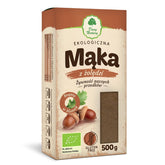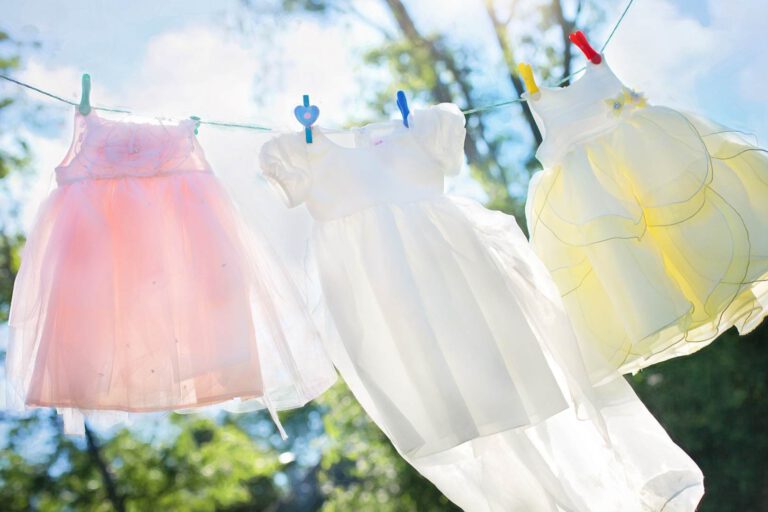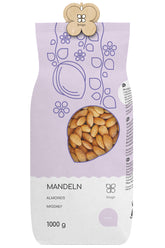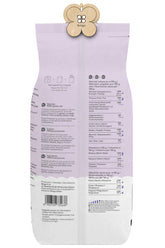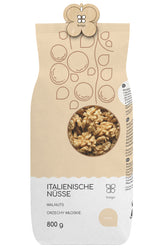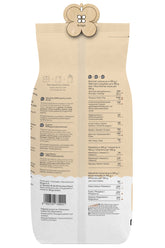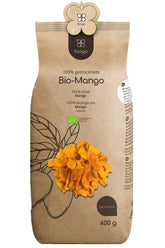Why do fabric softeners harm our planet?
Contents:
- How does drugstore fabric softener affect clothes?
- The impact of fabric softener use on the natural environment
- Natural and ecological alternatives to fabric softeners
Perhaps it's hard for us to imagine washing clothes without fabric softener because, over the past 30 years, we've convinced ourselves that without it, our clothes won't be soft and fragrant. Today, washing technology, different materials, and clothing dyes make fabric softeners obsolete. Despite this, they're still widely used, and most of us believe it's impossible to do laundry properly without them, or we use them without thinking, thinking it's simply necessary. Nowadays, the use of fabric softener is not only unnecessary but can also be harmful to our washing machines, clothes, and, most importantly, our planet.
How does drugstore fabric softener affect clothes?
Fabric softeners, which are used by pouring them into the appropriate drawer of the washing machine, are designed to make clothes softer and more fragrant, as well as prevent them from becoming electrostatically charged. They coat the fabric with a film layer that actually prevents static electricity. This makes clothes smoother and more slippery, while simultaneously making towels and sheets fluffier and softer by separating the fibers. All of this might seem like it makes these liquids useful for laundry, but in reality, it's different.
The coating that fabric softener gives clothing can negatively impact moisture absorption and wicking. This is especially important for activewear, which is specifically designed to wick moisture away from the skin to the outside of the fabric, where it can naturally evaporate. However, coating the material with a layer of fabric softener inhibits this process. Furthermore, this coating builds up with each subsequent wash. This makes it difficult for water and detergent to penetrate, making stains and unpleasant odors harder to remove.
Even if the clothing appears extremely soft, comfortable, and fluffy at first glance, the absorbency of the fabrics is reduced due to the layer of grease that has accumulated on them. This is particularly problematic for towels, whose job is to absorb as much water as possible after bathing, but also for underwear and bedding, which are designed to absorb and evaporate sweat.
There may be liquid residue in the washing machine and dryer, which is not good for these appliances and also causes the residue to deposit on the clothes, even if we do not use fabric liquid in a particular wash cycle.
It also happens that fabric softeners discolor clothes, leaving gray or bluish stains, while the formation of a protective film can also cause white materials to turn yellow.
The impact of fabric softener use on the natural environment
For many of us, buying fabric softener is a natural instinct—our mothers did it, so we follow that pattern without giving it much thought. However, not all of us realize that these products can contain ingredients derived from crude or palm oil, as well as animal-derived ingredients—such as dihydrogenated tallow chloride and dimethyl ammonium, which are derived from animal fat. One of the main ingredients in most fabric softeners is quaternary ammonium compounds (QACs), which are designed to eliminate the static electricity in clothing. Unfortunately, they can cause upper respiratory tract and skin irritation. In addition, they are poorly biodegradable and pose a toxic hazard to living aquatic organisms. This is even harder to accept when you consider that they end up directly in our water systems during washing.
Natural and ecological alternatives to fabric softeners
If we forgo laundry detergents, we don't have to settle for stiff and rough clothes. There are at least several homemade, inexpensive, and easy ways to soften laundry. Here are a few:
- Epsom salt , baking soda, essential oil
Pour a glass of Epsom salt, 1/4 cup of baking soda, and about 10 drops of your favorite essential oil into a sealed container and mix well. The resulting powder should be poured directly into the washing machine. About two to three tablespoons of the mixture is sufficient for one wash cycle.
- Vinegar , essential oil
Pour a glass of vinegar into a bottle, preferably one with a sprayer, and add about 10 drops of essential oil. Vinegar softens fabrics and has antibacterial properties. Simply spray a little of the prepared liquid onto the clothes before you begin the drying process.
- Vinegar, soda
Pour warm water into the bowl and then add baking soda . One glass of water requires half a glass of soda. Once the ingredients are mixed, add half a glass of vinegar and a few drops of oil, up to ten. The liquid can be poured into the washing machine's designated drawer—about 1/4 cup.
While avoiding drugstore fabric softeners and replacing them with homemade ones, and the adjustment to such a change, requires some patience and time, it is beneficial from an economic, health, and environmental perspective. Homemade liquids do not harm clothing, equipment, or the environment.
THE PUBLISHER'S CHOICE
Almonds 1 kg BIOGO
- £11.00
£13.00- £11.00
- Unit price
- / per
Walnuts 800 g BIOGO
- £8.00
£10.00- £8.00
- Unit price
- / per
Dried organic mango 400 g BIOGO
- £10.00
- £10.00
- Unit price
- / per
Dried White Mulberries 500 g ORGANIC
- £6.00
£7.00- £6.00
- Unit price
- / per
Dried organic figs 800 g BIOGO
- £28.00
- £28.00
- Unit price
- / per
Unpeeled buckwheat groats 1 kg BIOGO
- £3.00
£3.00- £3.00
- Unit price
- / per
Organic coconut flakes 500 g BIOGO
- £10.00
- £10.00
- Unit price
- / per
Organic oat flakes 600 g BIOGO
- £4.00
- £4.00
- Unit price
- / per


